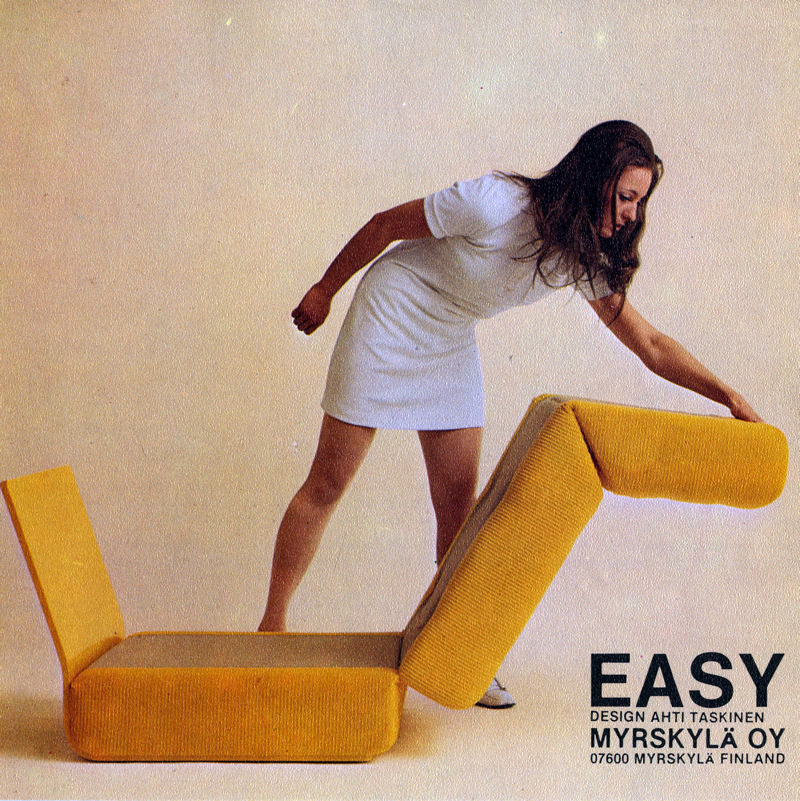The story of the Easy bedchair
The Easy bed chair was designed with people's real needs in mind. It is a sleek, uncomplicated piece of furniture that was first presented to the public at Habitare in the autumn of 1970. In this design story, interior architect and furniture designer Ahti Taskinen tells the full story of the Easy bed chair he designed.
The starting point was to develop a recliner that could swiftly be converted to a spare bed. In 1969, I moved back to Helsinki from Lahti and rented a studio. I sketched out different solutions for the bedchair idea, thinking about materials and studying the details. It took so long that my colleague Jussi Heinonen was already suggesting that I should abandon the whole idea.
Around Christmas time, I presented by draft to Niilo Salminen, the director of Myrskylä Oy. He asked a newly recruited sales manager to evaluate the model. "If they start making those here, I'll quit immediately," he said, agitated. The manager turned to the technician and asked if the chair could be made. "The backrest mould costs money, but the problem would be rounding the edges, an industrial method would have to be developed," he replied. Salminen decided to make a prototype to see what it would look like and how it would work.
Jussi Heinonen, who had suggested burying my idea, got interested and the modular shelf and desks around it. He drafted the product display and was given the task of designing the Myrskylä stand for the first Habitare fair in 1970.
The technician cut the spikes of the rotating steel brush into the shape of the edge rounding, making it conveniently always the same shape. The sales manager shook his head during the product meetings, but when the fair opened, he eagerly opened the Easy bed and occasionally called the factory to make another hundred. Director Salminen later said that if the sold bed chairs were opened one after the other, the queue would stretch from Lahti to Helsinki and beyond.
Myrskylä Oy built its own factory for Easy and advertised it on TV, but after a few years it went bankrupt. Easy, which traders called Essi, was manufactured by a new company, Moy-tuote Oy, set up on the factory premises. I started to develop the chair from a youth furniture to make it more suitable for living-rooms. I raised the seat height with small feet and removed the buttons to allow the cover to be removed for washing.
However, the Moy-tuote ran into difficulties and Easy continued to be produced by Sopenkorpi Oy in Lahti, which was soon sold, and the new manufacturer was Sope Oy. Easy's legs were converted into lockable wheels. As time went on, the price of the product started to rise and sales began to dwindle, but Sope continued to manufacture Easy until 2014, when it sold its entire curtain range to Interface. A prototype of the Easy was still being made, but when the price of the product could not be matched by the market, the manufacturer decided that it was unprofitable to continue production.
The basic idea behind Easy has remained the same for almost 50 years. Sometimes a tubular version was made alongside the backrest, in which case armrests were also developed. Over the years, the problem with Easy has been its price, which has risen from just under 300 marks to almost a thousand euros.
The advantage of the Easy bed chair has been that it doesn't look like a technical gadget and can be opened into a bed and returned to a chair with a flick of the wrist. There is also always a need for a spare bed. You can no longer make people's furniture out of Easy, but you can make quality furniture at a medium price. With the original design language and updated manufacturing techniques, a new manufacturer should be found eventually.
